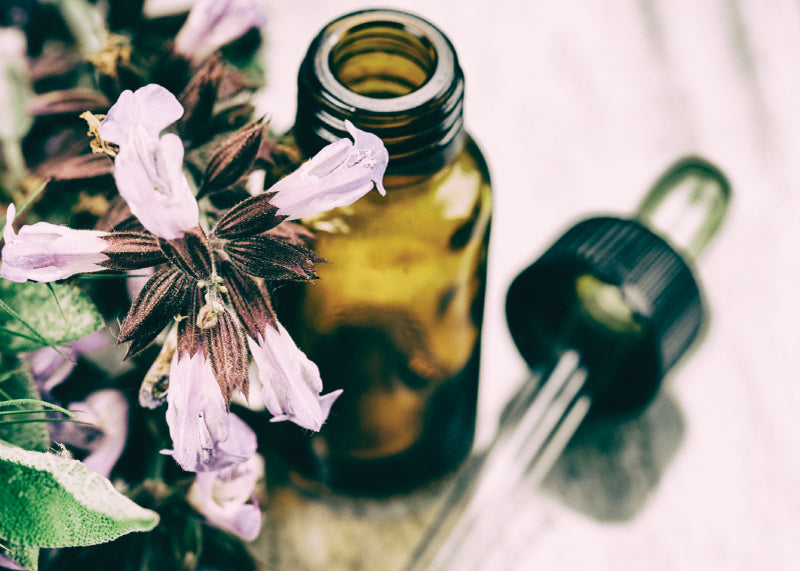Herb Article
Peony
By Lelia Lyon, Certified Herbalist
 Common Name
Common Name
Peony
Latin Name
Paeonia spp.
Parts used
Root
Medicinal Properties
Change can be challenging and stressful for many of us and as we shift from winter to spring it is important to take care of ourselves. One of my favorite herbs to reach for during hectic times is Peony. Peony calms my stress levels and restores balance helping me to move through change with ease.
A helpful way to approach peony and its uses is to view it through the eyes of Chinese medicine. Peony is used in cases of Yin deficiency, when there is excess heat. In general, peony is calming, cooling, sedating, and dispersing.
Peony is well known for its antispasmodic properties. P. officinalis was used by physiomedicalists for nervous conditions, convulsions, and epilepsy. Peony calms spasms in the hands and feet, whooping cough, abdominal spasms, nervous twitches, spasms of the genitourinary tract, smooth muscle spasms; especially uterine cramping, angina, and migraine headaches. Peony has been used extensively with women's reproductive health. It has been used cross culturally for symptoms associated with dysmenorhea including cramping, heavy bleeding, bloating (breast and abdominal), acne at ovulation or right before the period, etc. Peony can help to relieve pelvic stagnation that results in dark blood, clotting, delayed menstruation, premenstrual anxiety and irritability. Peony has been used throughout history in labor to relax the mother, reduce cramps, facilitate labor and expel the placenta after childbirth. Peony can also alleviate a myriad of hormonal issues including Polycystic Ovarian Syndrome (PCOS), elevated androgens, low progesterone, and estrogen excess. Some of peony's constituents are thought to work on the pituitary, thereby helping to regulate hormone production. It is important to note that if you plan on working with peony in this way, you should do so only with a qualified practitioner. Peony can also be an ally in helping women through the changes associated with menopause. Specifically, it can cool menopausal women who are hot and woken up by night sweats.
While we have touched on some of peony's more specific applications above, it is important to note that it is a very widely used herb and can be used in cases of inflammation, fever, insomnia, nightmares, sluggish digestion, headache, and much more.
Contraindications
Avoid use during pregnancy. Contraindicated with anticoagulant or antiplatelet drugs, antidiabetics, and sedatives. Individuals with bleeding disorders should avoid use.
Preparations & Applications
Peony can be taken as a tincture or drank as a tea. A decoction is made by adding one tablespoon of the root to 8 ounces of water in a covered pot. Simmer the root for twenty minutes and then strain. It is important to note that the water should not boil but should be a low simmer.
Recipe
Calm Belly
This tea helps to calm a nervous tense tummy. This could be a great tea for those with digestive issues due to stress or to help recover after a bought of diarrhea. It will help cool the tummy and mellow out the mind.
1 part Lemon Balm
1/2 part Peony
1/2 part Linden
1/2 part Wood Betony
1/4 part Chamomile
1/4 part Licorice
Add one tablespoon of the mix to 8 ounces just boiled water, cover and let steep for 15 minutes. Strain and enjoy.
Resources
Herbal Emissaries: Bringing Chinese Herbs to the West, Foster S, Chongxi Y.
Encycolopedia of Herbal Medicine, Chevallier, A.
Hildergard von Bingen's Physica, von Bingen, H. Translated by Throop, P.
Native American Ethno Botony, Moerman, D.
Flower Power: Flower Remedies for Healing Body and Soul Through Herbalism, Homeopathy, Aromatherapy, and Flower Essences, McIntyre A.
A Modern Herbal, Grieve, M
Women, Hormones and the Menstrual Cycle: Herbal and medical solutions from adolesence to menopause, Trickey, R.
The Earthwise Herbal: A Complete Guide to Old World Medicinal Plants, Wood, M.
Planetary Herbology, Tierra, M.
 Common Name
Common NamePeony
Latin Name
Paeonia spp.
Parts used
Root
Medicinal Properties
Change can be challenging and stressful for many of us and as we shift from winter to spring it is important to take care of ourselves. One of my favorite herbs to reach for during hectic times is Peony. Peony calms my stress levels and restores balance helping me to move through change with ease.
A helpful way to approach peony and its uses is to view it through the eyes of Chinese medicine. Peony is used in cases of Yin deficiency, when there is excess heat. In general, peony is calming, cooling, sedating, and dispersing.
Peony is well known for its antispasmodic properties. P. officinalis was used by physiomedicalists for nervous conditions, convulsions, and epilepsy. Peony calms spasms in the hands and feet, whooping cough, abdominal spasms, nervous twitches, spasms of the genitourinary tract, smooth muscle spasms; especially uterine cramping, angina, and migraine headaches. Peony has been used extensively with women's reproductive health. It has been used cross culturally for symptoms associated with dysmenorhea including cramping, heavy bleeding, bloating (breast and abdominal), acne at ovulation or right before the period, etc. Peony can help to relieve pelvic stagnation that results in dark blood, clotting, delayed menstruation, premenstrual anxiety and irritability. Peony has been used throughout history in labor to relax the mother, reduce cramps, facilitate labor and expel the placenta after childbirth. Peony can also alleviate a myriad of hormonal issues including Polycystic Ovarian Syndrome (PCOS), elevated androgens, low progesterone, and estrogen excess. Some of peony's constituents are thought to work on the pituitary, thereby helping to regulate hormone production. It is important to note that if you plan on working with peony in this way, you should do so only with a qualified practitioner. Peony can also be an ally in helping women through the changes associated with menopause. Specifically, it can cool menopausal women who are hot and woken up by night sweats.
While we have touched on some of peony's more specific applications above, it is important to note that it is a very widely used herb and can be used in cases of inflammation, fever, insomnia, nightmares, sluggish digestion, headache, and much more.
Contraindications
Avoid use during pregnancy. Contraindicated with anticoagulant or antiplatelet drugs, antidiabetics, and sedatives. Individuals with bleeding disorders should avoid use.
Preparations & Applications
Peony can be taken as a tincture or drank as a tea. A decoction is made by adding one tablespoon of the root to 8 ounces of water in a covered pot. Simmer the root for twenty minutes and then strain. It is important to note that the water should not boil but should be a low simmer.
Recipe
Calm Belly
This tea helps to calm a nervous tense tummy. This could be a great tea for those with digestive issues due to stress or to help recover after a bought of diarrhea. It will help cool the tummy and mellow out the mind.
1 part Lemon Balm
1/2 part Peony
1/2 part Linden
1/2 part Wood Betony
1/4 part Chamomile
1/4 part Licorice
Add one tablespoon of the mix to 8 ounces just boiled water, cover and let steep for 15 minutes. Strain and enjoy.
Resources
Herbal Emissaries: Bringing Chinese Herbs to the West, Foster S, Chongxi Y.
Encycolopedia of Herbal Medicine, Chevallier, A.
Hildergard von Bingen's Physica, von Bingen, H. Translated by Throop, P.
Native American Ethno Botony, Moerman, D.
Flower Power: Flower Remedies for Healing Body and Soul Through Herbalism, Homeopathy, Aromatherapy, and Flower Essences, McIntyre A.
A Modern Herbal, Grieve, M
Women, Hormones and the Menstrual Cycle: Herbal and medical solutions from adolesence to menopause, Trickey, R.
The Earthwise Herbal: A Complete Guide to Old World Medicinal Plants, Wood, M.
Planetary Herbology, Tierra, M.




